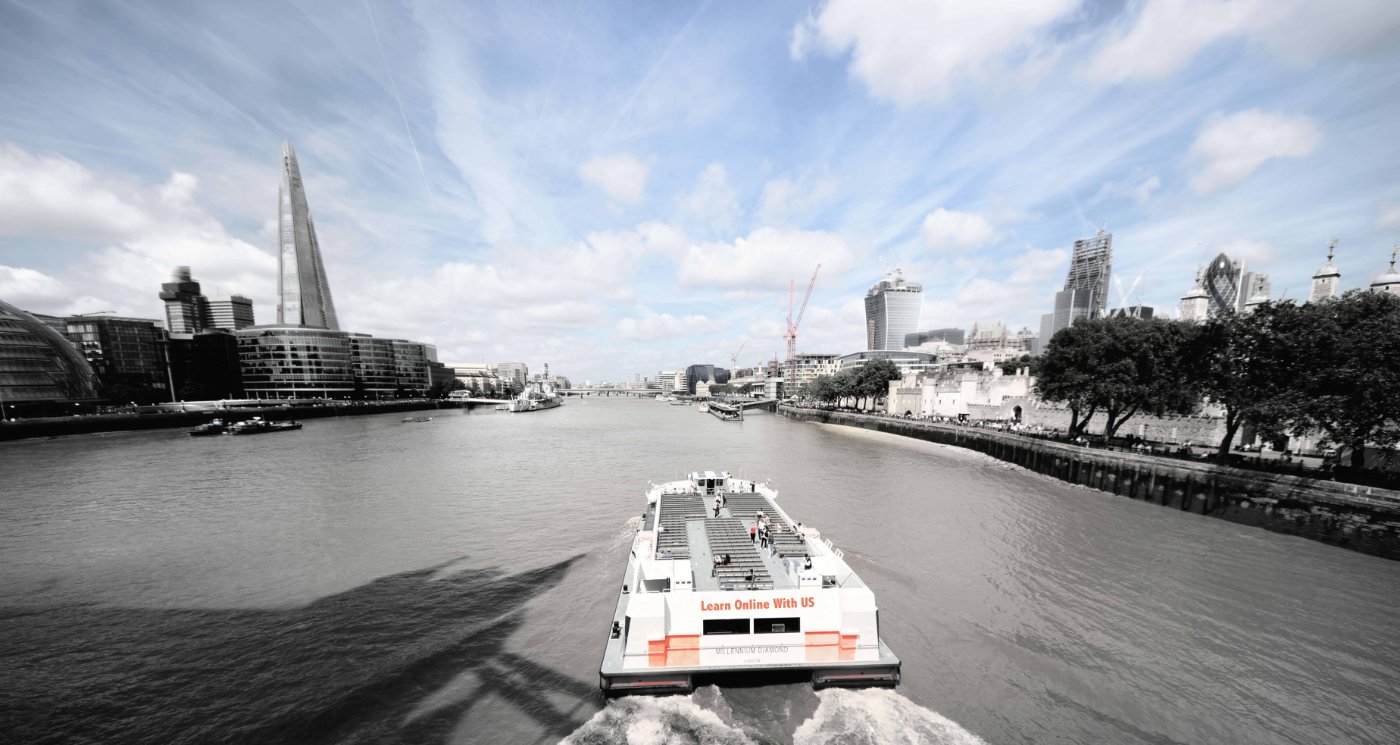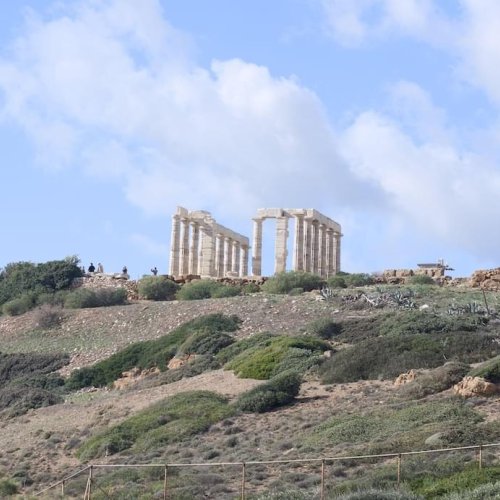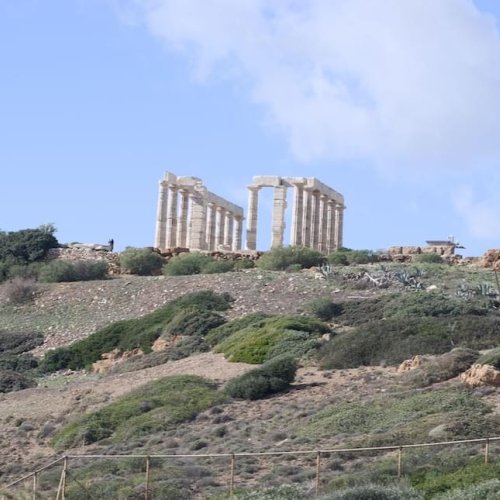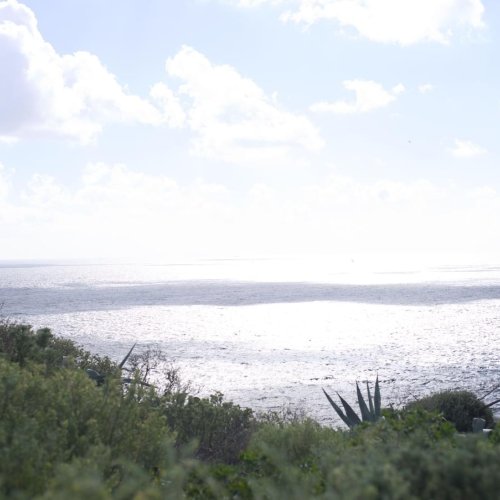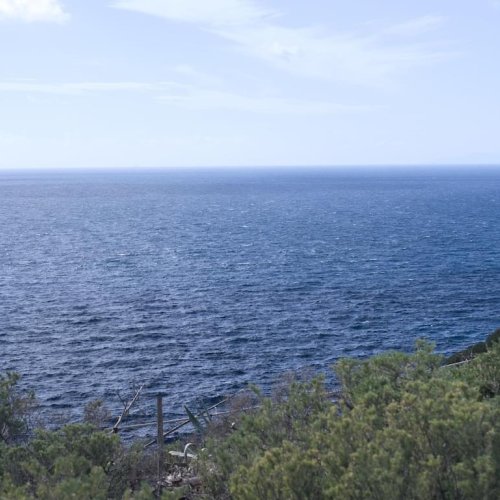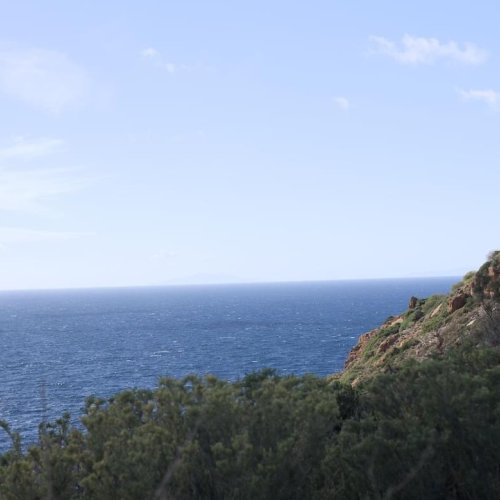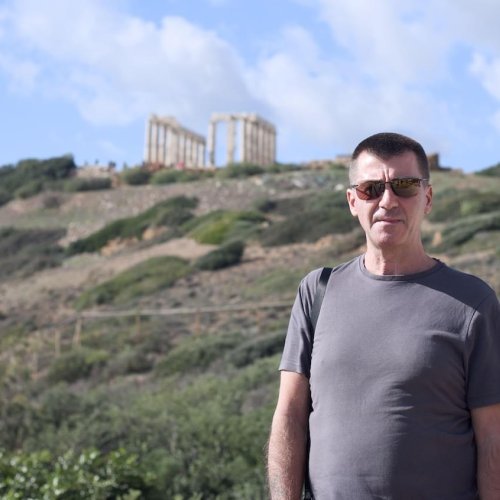Temple of Poseidon
According to mythology, this is where Aegeus, king of Athens, fell into the sea because of a misunderstanding. Theseus, the son of Aegeus, had traveled to Crete to kill the Minotaur, the legendary monster who lived in the palace of Knossos. He wanted to release Athens from the obligation to send seven boys and seven girls every year to the king of Crete, only to be eaten by the Minotaur.
Is in Cape Sounion, Athens: Cape Sounion is located about 70 km from Athens, on the southernmost tip of the Attica peninsula.
According to mythology, this is where Aegeus, king of Athens, fell into the sea because of a misunderstanding.
Theseus, the son of Aegeus, had traveled to Crete to kill the Minotaur, the legendary monster who lived in the palace of Knossos. He wanted to release Athens from the obligation to send seven boys and seven girls every year to the king of Crete, only to be eaten by the Minotaur.
Theseus promised his father that if he killed the Minotaur, he would hoist a white sail on the return home.
The hero did kill the Minotaur and was returning to Athens safe and well. Unfortunately, though, he forgot to hoist white sails and had a black sail on his mast.
Aegeus saw the black sail from Cape Sounion and believed that his son was dead.
His despair made him fall into the sea and, later on, the Athenians named the sea after him, thus the Aegean Sea
More information about the Temple of Poseidon
Some of the archaeological items found on the site date from as early as the 8th century BC, while Herodotus' documents affirm that the Athenians used to celebrate a quadrennial festival at Cape Sounion in the 6th century BC.
In Homer's Odyssey, while Menelaus was returning from Troy, he stopped at this temple where he buried Phrontes, his helmsman.
In fact, Athenians were emotionally bonded with this place as this was the last point of their land that the ancient Athenian seafarers and warriors could see when they sailed away into the Aegean and around the Mediterranean Sea. It also was the first visible spot in Attica when they returned from a journey or war.
For that reason, Athenians decided to build a temple dedicated to Poseidon, the god of the sea, as a way to request peaceful sea trips so that they would come back home safely.
The first version of the temple was built during the Archaic Period but was destroyed by the Persians in 480 BC.
Pericles, the famous Athenian politician, rebuilt the temple of Poseidon around 440 BC. The temple was 13 columns long and 6 columns wide. Unfortunately, not all columns stand until today.
A 5-meter-tall statue of Poseidon used to stand inside the temple. Nowadays, the only part of it that has survived is displayed in the Archaeological Museum of Athens.
The frieze of the temple was made of marble from Paros Island and depicted the feats of Theseus.
On one column, you can see the word Byron on it, engraved by the famous philhellene poet Lord Byron during a visit in 1810.
